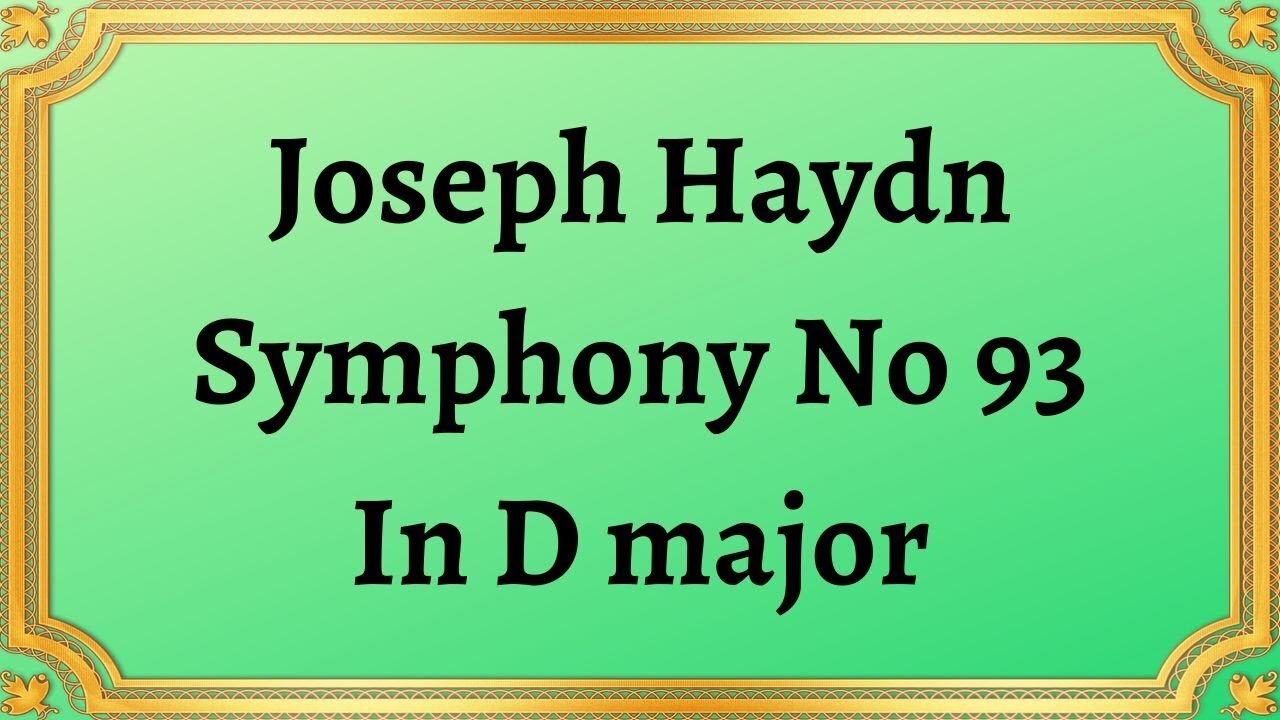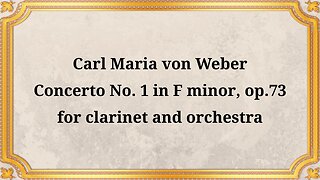Premium Only Content

Joseph Haydn Symphony No 93, In D major
#JosephHaydn #SymphonyNo93 #MusicalComposition #ClassicalMusic #OrchestralMusic #18thCenturyMusic #AustrianComposer #Kapellmeister #JohannTost #Melodies #TechnicalPrecision #Orchestration
Publication date 1950
NBC Symphony Orchestra; Guido Cantelli
Joseph Haydn's Symphony No. 93 in D major is a distinguished work of orchestral music and is recognized for its charming melodies, rhythmic vibrancy, and technical precision.
The symphony was composed in 1791, during a time when Haydn was experiencing great success as the Kapellmeister for Prince Esterhazy. It was written as part of a set of twelve symphonies commissioned by Johann Tost, a violinist and Haydn's former student.
The first movement, Adagio – Allegro assai, opens with a slow, mysterious introduction that leads into a lively and virtuosic Allegro section. Haydn employs his signature use of orchestral dynamics, varying the volume and intensity throughout the movement to create a highly dramatic effect.
The second movement, Largo cantabile, is a beautiful and introspective piece with a strong emotional weight. It showcases Haydn's mastery of orchestration, with delicate and expressive solo passages by various instruments, including the flute, oboe, and violin.
The third movement, Menuetto: Allegretto, is a playful and rhythmic dance movement. It features a memorable theme played by the strings that is contrasted with a more staccato melody performed by the winds and brass.
The fourth movement, Finale: Presto ma non troppo, is a fast and exhilarating piece that showcases Haydn's brilliance at building and releasing tension. It features a virtuosic violin solo that is passed between various sections of the orchestra, as well as sudden shifts in dynamics that keep the listener engaged until the final note.
The thing that sets Haydn Symphony No. 93 apart from other works of its time is its exceptional balance between technical mastery and emotional depth. Haydn's playful use of various musical motifs and varying degrees of instrumentation creates complex and layered pieces of music that keep the listener engaged throughout.
In conclusion, Joseph Haydn Symphony No. 93 in D major is a masterful example of classical orchestral music. Its expressive melodies, dynamic orchestration, and imaginative themes showcase Haydn's unique approach to composition. When listening to this piece, one can appreciate the vivid colors and tonal palette that is characteristic of Haydn's works, while also experiencing the emotional range and depth that he imbued into his music.
You have the opportunity to support the channel https://destream.net/live/RadSiarAl/donate
-
 20:31
20:31
Classical music_Music Inspiration
14 days agoCarl Maria von Weber Clarinet Concerto No. 1 in F minor, Op. 73
381 -
 6:13
6:13
scoutthedoggie
19 hours agoClose-Quarters Airsoft gameplay Scotland 2025
7.92K2 -
 5:08
5:08
The Shannon Joy Show
13 hours agoDr. David Martin: Bio-Terror SHOCKER! Is The Pentagon Planning Another Crisis On July 4?
15.3K2 -
 10:04
10:04
VSOGunChannel
16 hours ago $0.59 earned2nd Amendment Civil Rights Task Force: Gun Grabber Nightmare? or More Wind?
9.5K3 -
 3:28
3:28
The Official Steve Harvey
15 hours ago $1.14 earnedThe Funniest 😂 & Cheesiest 🧀 Pickup Lines Ever! I Steve Harvey
13.5K1 -
 LIVE
LIVE
SPLASH Fashion Tv
4 days ago $17.88 earnedBIKINI WATCH PARTY 31: Miami Play Things / Best of Miami Swim Week
3,677 watching -
 1:01:10
1:01:10
Mike Rowe
4 days agoPETA Is NOT Gonna Like This… | Peggy Rowe #433 | Coffee With Mom
42.4K73 -
 20:05
20:05
Stephen Gardner
16 hours ago🔥Omar SPREADS DANGEROUS lie as Trump makes SHOCK ANNOUNCEMENT!
32.9K109 -
 2:21:56
2:21:56
Badlands Media
16 hours agoBaseless Conspiracies Ep. 131
82.4K23 -
 36:21
36:21
The Why Files
19 hours agoMysteries of the Sea Vol 2: Ghost Ships & Unexplained Maritime Disappearances
49.8K18